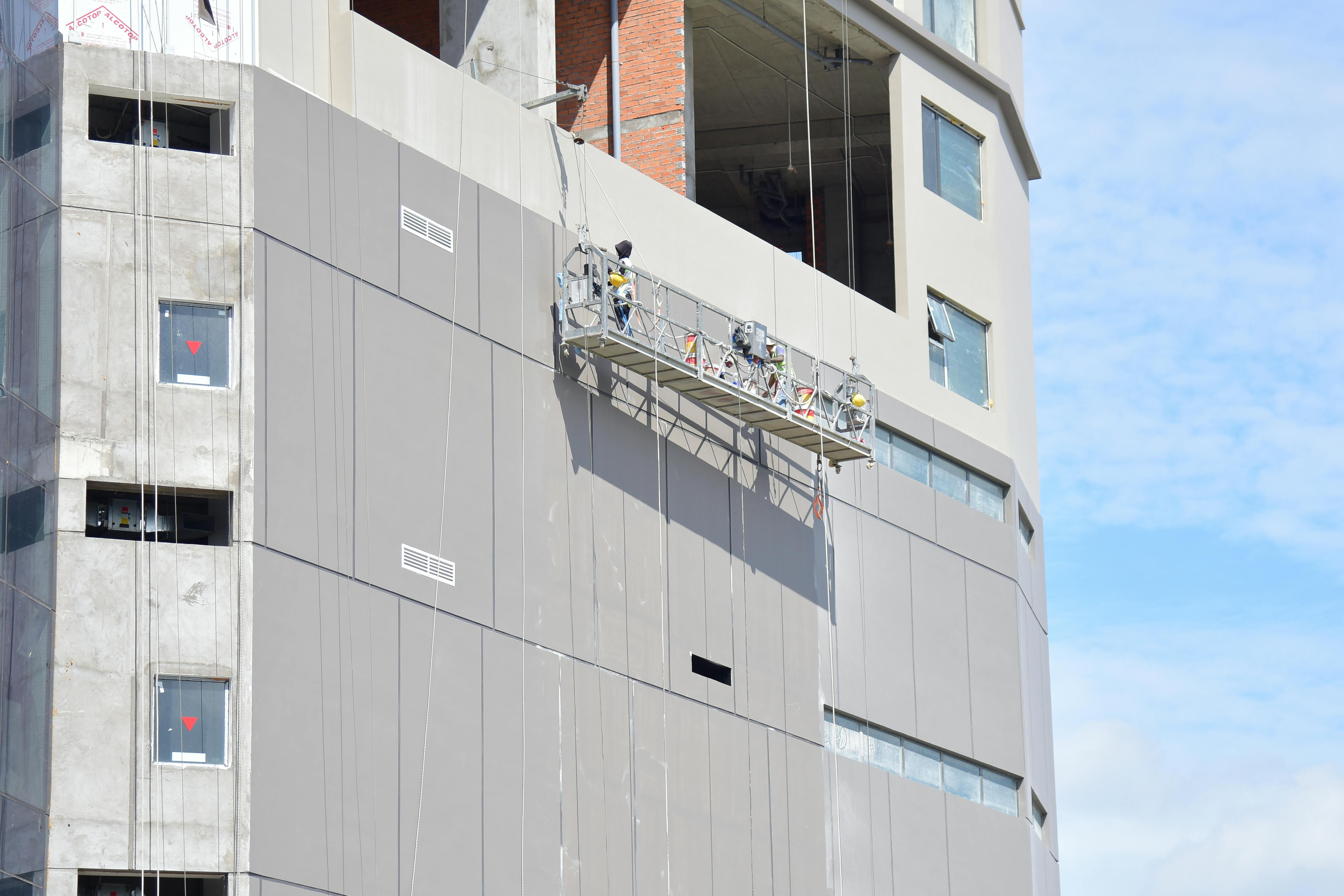Elevators are at the heart of any multistory building—quietly working behind the scenes to keep people, business, and daily routines moving smoothly. If you own, develop, or manage a building, you already know that when elevators stop, everything else grinds to a halt. Unplanned downtime leads to tenant frustration, accessibility complaints, and revenue loss while unexpected repair bills can devastate your budget. The solution isn’t just reactive repairs, but a comprehensive elevator maintenance contract tailored to your property’s needs. At Kaiser Elevator, we believe maintenance contracts should deliver real value, not just box-ticking for code compliance. Here’s what every owner and property manager needs to know to minimize both downtime and cost.
Why Elevator Maintenance Contracts are a Strategic Investment
Elevator systems are intricate, blending mechanical, electrical, and digital components—each with their own lifespans and potential failure points. Routine inspections and preventive maintenance are essential not just for operational reliability, but for legal compliance and risk management.
- Uptime and Tenant Experience: Proactive care reduces surprises, ensuring elevators are available and responsive even during peak traffic.
- Legal and Code Compliance: Regular servicing is mandated by city, state, and national codes. Documenting maintenance protects you from fines and liability.
- Lifecycle Cost Control: Well-maintained elevators have longer useful lives and fewer catastrophic failures. This allows you to predict capital expenditures and prevent costly last-minute overhauls.
- Property Value Protection: Safe, modern, reliable elevators are a selling point for tenants, buyers, and lenders alike.

Core Elements of an Effective Elevator Maintenance Contract
All contracts are not created equal. To minimize costs and downtime, be sure your maintenance agreement addresses these critical points:
1. Maintenance Frequency and Scheduling
- Routine Visits: For most commercial systems, monthly maintenance is the standard. Busy facilities (high-rise offices, hospitals, hotels) may require biweekly attention.
- Inspection Scope: Contracts should clearly list what each service includes—lubrication, safety checklists, inspection of key moving parts, control diagnostics, door operation tests, and cleaning.
- Documentation: Ensure every visit is logged (both for compliance and to track service performance).
2. Emergency Response and Downtime Guarantees
- 24/7 Hotline: Having a contract is meaningless if your provider doesn’t answer after hours. At Kaiser Elevator, our clients have access to a dedicated 24/7 emergency line with 1-hour service call turnaround on priority requests (learn more).
- Response Time Commitments: Ask for written guarantees on maximum response times—especially for critical issues like entrapments or power failures.
3. Scope of Coverage & Key Exclusions
- Full Maintenance vs. Limited: Understand whether labor, parts, and repairs are bundled, or if you’ll pay extra for anything beyond basic lubrication and inspection. For most commercial and high-rise assets, full maintenance agreements provide the predictability and risk management that owners want.
- Common Exclusions: Contracts typically do not cover modernization, cosmetic repairs, damage from natural disasters, or vandalism. Read exclusions closely and set aside contingency funds as appropriate. Find out how we approach this transparency at our service process page.
4. Terms, Renewals, and Exit Strategies
- Contract Duration: Typical agreements range from 1–5 years. Shorter terms give flexibility; longer terms offer pricing stability but can limit your options if performance drops.
- Automatic Renewals: Many contracts auto-renew unless canceled months in advance. Mark your calendar to review before rollover dates.
5. Price Escalation Clauses
- Cap Rate Increases: Lock in low, predictable increases—a critical tool for controlling OPEX.
6. Reporting and Communication
- Service Reports: Each visit should produce a digital or handwritten report, noting work performed, parts replaced, recommendations, and compliance checks.
- Staff Training: Some providers offer training sessions for your property team so they can handle minor resets, emergency communication, and other basics without extra callouts. Kaiser Elevator supports building staff with targeted training. Ask for this upfront if important.
Types of Elevator Maintenance Contracts Explained
- Full Maintenance: Covers routine service, travel, parts, and most repairs. Best for owners/managers prioritizing predictability and minimal hassle.
- Parts, Oil & Grease (POG): Basic routine service. You pay extra for repairs beyond lubrication and inspections.
- Survey and Report: Inspection only—no repairs, no emergency response. Suitable only for those with skilled in-house engineering teams able to coordinate repairs themselves.
Choosing the right type comes down to your tolerance for risk, internal capabilities, and budget certainty. If your elevators are mission-critical and downtime is unacceptable, the full maintenance model almost always will save money and frustration over time.
How to Negotiate a Smarter Elevator Maintenance Contract
- Benchmark Multiple Providers: Even if you’re happy with your current vendor, getting competing proposals ensures you’re not overpaying.
- Clarify Scope and Frequency: Avoid vague language (like “as needed”). Insist on a set number of visits per month/year.
- Define Emergency Response Expectations: Ask for documented protocols and guaranteed response times.
- Negotiate Repair Rates for Excluded Items: If cosmetic or modernization work is outside your agreement, be sure you know what those hourly or parts costs will be ahead of time.
- Require Service Documentation: Insist on timely, detailed service logs. This is essential for code compliance and warranty claims.
- Understand Renewal and Termination Clauses: Know when your contract renews, how to opt out, and any penalties.
- Leverage Training: An educated building team reduces nuisance callouts and can cut costs long-term. We provide targeted sessions as part of our value-added approach at Kaiser Elevator.
What Maintenance Can’t Fix: Modernization and Asset Life Cycle
Even the best routine maintenance cannot postpone all upgrades forever. After 20–30 years, many elevator systems become inefficient or out-of-code. Manufacturers may discontinue parts, or tenant expectations shift to require faster speeds, better accessibility, or modern controls.
- Modernization: Includes updating controllers, drives, safety hardware, interior finishes, lighting, and more. Proactively budgeting and planning for these projects (well before failure) helps you avoid lengthy outages or emergency pricing. If you want more details, see our in-depth guide comparing modernization vs. full replacement.

Practical Steps: Minimizing Risk, Downtime, and Cost
- Audit Your Current Contract and Vendor: Are routine visits being logged? Are they catching issues before failures? Is response time what you expect?
- Schedule an Independent Assessment: Use an outside expert (even for one visit) to benchmark your elevator’s health against modern safety and performance standards.
- Compare Quotes with Apples-to-Apples Detail: Insist that each bidder breaks out similar services and exclusions so you can make objective decisions, not just choose the cheapest upfront price.
- Plan for the Full Lifecycle: If your system is past 15 years, begin strategic planning for future modernization to spread major costs and avoid critical downtime.
Beyond the Contract: What Sets Us Apart at Kaiser Elevator
At Kaiser Elevator, our commitment extends beyond a service checklist. Here is what real value looks like for our partners:
- End-to-End Engineering: We don’t just maintain elevators. We work with you on modernization, system design, finish upgrades, and tailored solutions for every type of building.
- Compliance Obsessed: All work meets or exceeds American and NYC codes. We provide documentation for every visit and upgrade.
- Rapid Response Culture: Our 24/7 hotline connects you directly with local engineers, making sure your request never sits in a call center queue.
- Transparent Pricing and Reporting: No hidden surcharges, no inflated overtime bills.
- Advanced Technology: From predictive maintenance enabled by smart controls, to seamless integration with smart building systems, we help you prepare for tomorrow’s challenges.
- Customization: Your elevator is a reflection of your building. We offer a range of interior and control panel finish options (see more here), so your tenants are as impressed with the ride as the lobby.
- Staff Support: Our team trains yours to handle basic troubleshooting, enhancing safety and minimizing out-of-hours callouts.
Additional Resources for Owners and Managers
- For strategies to further maximize operational uptime, see our deep-dive on elevator uptime.
- If you’re exploring next-gen systems, our article on smart elevator systems and reduced maintenance cost is a great place to start.
- Curious about code changes? Check our code update guide for 2025.
Take the Next Step: Protect Your Building’s People and Bottom Line
Downtime and unexpected costs don’t have to be the norm. Maintenance contracts—when thoughtfully structured and actively managed—give you back control and peace of mind. Whether you’re reviewing your first agreement or seeking to optimize your current program, our engineers at Kaiser Elevator are here to help you benchmark, budget, and plan for the future. Contact us any time to request a tailored quote, schedule a building assessment, or simply talk through your contract concerns. If it moves people or vehicles vertically, we can keep it moving—safely, reliably, and cost-effectively.

